La Vanguardia: Día de estreno (14-12-1949) Día critica (16-11-1949)
Resulta curioso y en cierta manera confortante comprobar que el cine americano es el que mayor atención y mejor ánimo dedica a los temas de más tierna humanidad, a las historias cuyo desenlace amplía la sencilla moraleja de las verdades que tantas veces nos pasan inadvertidas y en las que resultan toda una justificación de la vida. <De ilusión también se vive> es una excelente adaptación al temario aludido y en los cuentos que triunfa la bondad, triunfan los que creen, y triunfa la incertidumbre en lo fantástico, que no es precisamente lo irreal, por cuanto la fantasía -y así lo demuestra esta película- es una gran creadora de felicidades, tan llenas de espiritualidad y que ponen un punto de luz, una aureola en el afán utilitario de la gris existencia cotidiana. Papa Noel -que en los países anglosajones viene a desempeñar la función de nuestros Reyes Magos- es el eje en cuyo torno gira el asunto de este film. La simpática originalidad del mismo, estriba en que su protagonista es un hombre bueno que ama y comprende a los niños, que siembra fe en las ilusiones, y en suma, que obra como obraría el mismísimo Santa Claus, si por arte de birlibirloque pudiera intervenir en la vida de los hombres. <De ilusión también se vive> desarrolla ese ingenioso motivo de una forma típicamente americana, entreverada de un aire ingenuo, de una entrañable buena intención, que es ciertamente lo que da a la cinta el pulso de una profunda cordialidad. La cinta, pues, acaba demostrando que es bueno tener ilusiones, que la ficción puede transformar la realidad y hacerla según nuestros anhelos. Y demuestra también en la vista de un juicio, que pudo muy bien llevar la firma de Frank Capra, que el personaje, barbudo y jovial, que como un símbolo, derrama prodigo los dones de cariño y crea en su torno la confianza en los ensueños, es realmente Papa Noel. Todo en la película tiene así un cándido tono de narración infantil, pensada sin embargo para los adultos, que cautiva y encanta. La simpatía de la anécdota es extraordinaria y tanto la realización como la interpretación engranan en una total armonía llena de gracia. Al frente del reparto, Edmund Gween, encarna de un modo insuperable al Santa Claus de carne y hueso que lleva en sus hombros el saco de juguetes que es la película; luego la luminosa belleza de Maureen O´Hara, la apostura de John Payne y el gesto de tan bien matizada desilusión de Natalie Wood, la niña que por acabar creyendo en la existencia de Papa Noel tendrá en sus manos, tangible y cierto, el mundo de sus fantasías. -H. SAÉNZ GUERRERO
CRITICA EN EL PERIODICO "ABC DE MADRID" (17-1-1950)
Se ha estrenado "De ilusión también se Vive" en la pantalla del cine Callao, con un poco de retraso, ya que su estreno lo hubiésemos considerado sumamente oportuno en los recientes días de las Navidades. Aunque la tradición española es fiel a la católica de los Reyes Magos, ahora se admiten igualmente, como motivo de fiesta en esas fechas "motivos externos diríamos nosotros" el árbol y el Papa Noel, y en éste vemos como un amable personaje prodigiador de aguinaldos. En el "film" que comentamos, ofrecido ayer, se tiende a demostrar "con finura, con sencillez, tocando las fibras sentimentales del espectador" que la ilusión pura e ingenua es imprescindible componente de la felicidad y que las bellas ilusiones abonan las hermosas realidades. Siguiendo una línea argumentad suave, un tanto pueril, con las imágenes bien logradas, y situaciones y diálogos que ponen de manifiesto el ingenio del director y argumentista "o guionista" George Seaton, esta película proporciona un rato agradable y se desarrolla sin que fatigue ni aburra un momento. aboga el "film" por que la gente menuda nu sufra un prematuro desencanto desengañandola de ese maravilloso mundo que nutre las infantiles imaginaciones y, también, por que los mayores, asidos, por fuerza, a las ásperas exigencias de lo cotidiano, sueñen "también ellos" y vuelen por los ámbitos de la fantasía. Habremos de calificar como excelente la interpretación de cuantos intervienen en la cinta, y de modo especial el trabajo de Edmund Gween, en el cometido de Papá Noel, y de la graciosa chiquilla Natalie Wood. La trama amorosa la sostienen Maureen O´Hara y John Payne. Así, cuantos contribuyen a la realización de la obra cinematográfica "técnicos y comediantes" han conseguido un excelente resultado. DONALD.
ooooooooooooooooooooooooooooooooooooooooooooooooooooooooooo
Santa is in New York!
The movie starts out in a festive atmosphere. It is Thanksgiving and the employees of Macy's department store are busy with preparations for the annual Thanksgiving day parade. Doris. Walker (Maureen O'Hare) is in charge of the parade. She anxiously hires Kris Kringle (Edmund Gwenn) to replace the man she hired to play Santa Claus when she discovers the original Santa is too intoxicated to even get on the float. Kris does such a good job that Mrs. Walker asks him to stay on in the role and be the department store's Santa. She soon has serious doubts about her decision when she discovers that her new Santa really believes he is Santa Claus.
Mrs. Walker is working, single mother, who works for Macy's Department Store in New York City. Natalie Wood plays her daughter, Susan. As the result of a failed Marriage, Doris raises her daughter to accept reality. There is no room for fantasy or make believe in her life. Susan is a quiet, child who acts more like a grown up than a 6 year old. She has difficulty using her imagination, and has become just as skeptical as her mother.
Since Kris, believes that "the important thing is to make children happy," winning the affection of Susan and her mother is his main objective.
Whether or not Kris is the real Santa Claus, there is no doubt that he seem to have an influence on almost everyone he meets--except for Macy's staff psychologist .Mr. Sawyer believes that Kris is delusional, and has him committed to thrown into a mental institution. In order to get out, Kris must face a court hearing, where not only is his sanity questioned, but the state of New York will decide if there really is a Santa Claus. Fred Gailey (played by John Payne) a neighbor of Doris Susan Walker agrees to represent Kris. The predictable end to the story is that Fred and Doris become attracted to each other, and as Fred works hard to secure Kris' freedom, Doris finds herself not only believing in Kris, but also in believing in fantasy.
Maureen O'Hara portrays Doris Walker with poise and sophistication. Although the movie is over 55 years old, the idea of a single working mom trying to raise her daughter after a bitter divorce, tells a story that is relevant by today's standards. Natalie Wood does such a good job at playing as the bright six year old, Susan, that you can almost imagine her going straight from being a baby to being an adult. John Payne, as Fred Gailey, predictably plays the handsome attorney who falls in love with Mrs. Walker. Even though it seems a bit unbelievable, this movie is all about fantasy, so we'll allow a bit of romance. Finally, Edmund Gwenn's portrayal of Santa Claus is so believable, that you almost believe that truly is the jolly old elf himself!
This reviewer would give the movie a 5 out of 5 rating. It is a Christmas classic that will be remembered for years to come as one of the best Christmas movies ever filmed. The message of the movie is not about the real meaning of Christmas, nor is it about the commercialism that has overshadowed the holiday for years. The message of the movie is that make believe and fantasy play an important role in our live. Without them we would have no basis for our hopes and dreams
Mrs. Walker is working, single mother, who works for Macy's Department Store in New York City. Natalie Wood plays her daughter, Susan. As the result of a failed Marriage, Doris raises her daughter to accept reality. There is no room for fantasy or make believe in her life. Susan is a quiet, child who acts more like a grown up than a 6 year old. She has difficulty using her imagination, and has become just as skeptical as her mother.
Since Kris, believes that "the important thing is to make children happy," winning the affection of Susan and her mother is his main objective.
Whether or not Kris is the real Santa Claus, there is no doubt that he seem to have an influence on almost everyone he meets--except for Macy's staff psychologist .Mr. Sawyer believes that Kris is delusional, and has him committed to thrown into a mental institution. In order to get out, Kris must face a court hearing, where not only is his sanity questioned, but the state of New York will decide if there really is a Santa Claus. Fred Gailey (played by John Payne) a neighbor of Doris Susan Walker agrees to represent Kris. The predictable end to the story is that Fred and Doris become attracted to each other, and as Fred works hard to secure Kris' freedom, Doris finds herself not only believing in Kris, but also in believing in fantasy.
Maureen O'Hara portrays Doris Walker with poise and sophistication. Although the movie is over 55 years old, the idea of a single working mom trying to raise her daughter after a bitter divorce, tells a story that is relevant by today's standards. Natalie Wood does such a good job at playing as the bright six year old, Susan, that you can almost imagine her going straight from being a baby to being an adult. John Payne, as Fred Gailey, predictably plays the handsome attorney who falls in love with Mrs. Walker. Even though it seems a bit unbelievable, this movie is all about fantasy, so we'll allow a bit of romance. Finally, Edmund Gwenn's portrayal of Santa Claus is so believable, that you almost believe that truly is the jolly old elf himself!
This reviewer would give the movie a 5 out of 5 rating. It is a Christmas classic that will be remembered for years to come as one of the best Christmas movies ever filmed. The message of the movie is not about the real meaning of Christmas, nor is it about the commercialism that has overshadowed the holiday for years. The message of the movie is that make believe and fantasy play an important role in our live. Without them we would have no basis for our hopes and dreams
ooooooooooooooooooooooooooooooooooooooooooooooooooooooooooo
"You'd Better Watch Out, You'd Better Not Cry.................."
...............Santa Claus has come to town. Or at least that's what a gentlemen appropriately named Kristopher Kringle played by Edmund Gwenn complete with full white beard is claiming. He makes his appearance at the Thanksgiving Day Parade as sponsored by R.H. Macy's Department Store and finds the Santa hired for the occasion, Percy Helton, full of a little too much Christmas cheer already. In charge of the parade is one of Macy's middle level executives, Maureen O'Hara, who fires Helton and hires Gwenn right then and there.
Gwenn's obvious sincerity makes him an ideal Santa Claus for Macy's and for us. He spreads the real meaning of Christmas around even has Macy's declaring a holiday truce with its rival Gimbel's. That's a part of Miracle on 34th Street that might be lost to viewers today. Gimbel's was Macy's big department store rival and it's flagship store in New York stood across 34th Street at the time. Gives a meaning to the title that is lost on today's audience.
But wiser and more sophisticated folks like the majority of us know there ain't no such thing as Santa Claus. Even Maureen O'Hara knows that and imparts it to her daughter Natalie Wood. Gwenn's just a kind old man in a white beard. But when his sanity is questioned, Gwenn's belief becomes a matter for the courts where Gwenn is ably defended by O'Hara's boyfriend, lawyer John Payne.
Like that other holiday classic It's A Wonderful Life, Christmas is never complete without seeing Miracle on 34th Street. Though New York has changed considerably since 1947 the year I made my earthly debut, the film has lost absolutely none of its charm.
Edmund Gwenn won the Best Supporting Actor of 1947 and in doing so, beat out his best friend, Finlay Currie, who was up that year for playing Magwitch in Great Expectations. The two had met in stock companies in their native Scotland and were friends right up to when Gwenn passed away in 1959. The Oscar was the high point of his career.
Maureen O'Hara in her memoirs says that Miracle on 34th Street holds a special place in her affections. In fact until Gwenn died, she had hopes of doing some kind of sequel. She bonded on stage with young Natalie Wood who later played her daughter in Father Was A Fullback also and kept in contact with her right up to her death in 1981.
Maureen also had a deep affection for John Payne who she made four films with and says was one of the nicest men in the world. One story she related was on the set of another film they made, Payne was served with divorce papers right on the set from his then wife, Anne Shirley. She said he broke down and cried like a baby. If it weren't for the fact she was married, she said she definitely could have gotten something going with Payne.
In the supporting cast note the presence of one grinch in the person of Porter Hall who played one of his patented nasty little meanies. His meddling and general misanthropy cause Gwenn to have that trial in the first place. Look for a bit role from Jack Albertson as the postal employee who inadvertently saves the day. Also making her film debut is Thelma Ritter as the mother of a child looking to meet Santa Claus, the one official Santa Claus, courtesy of Macy's Department Store.
Although Miracle on 34th Street has been remade several times over the years, this one is the genuine article. As genuine as the fact that Macy's has the official Santa Claus as certified by a higher authority.
One thing has always puzzled me though. How long did it take Edmund Gwenn to grow that beard for the part?
Gwenn's obvious sincerity makes him an ideal Santa Claus for Macy's and for us. He spreads the real meaning of Christmas around even has Macy's declaring a holiday truce with its rival Gimbel's. That's a part of Miracle on 34th Street that might be lost to viewers today. Gimbel's was Macy's big department store rival and it's flagship store in New York stood across 34th Street at the time. Gives a meaning to the title that is lost on today's audience.
But wiser and more sophisticated folks like the majority of us know there ain't no such thing as Santa Claus. Even Maureen O'Hara knows that and imparts it to her daughter Natalie Wood. Gwenn's just a kind old man in a white beard. But when his sanity is questioned, Gwenn's belief becomes a matter for the courts where Gwenn is ably defended by O'Hara's boyfriend, lawyer John Payne.
Like that other holiday classic It's A Wonderful Life, Christmas is never complete without seeing Miracle on 34th Street. Though New York has changed considerably since 1947 the year I made my earthly debut, the film has lost absolutely none of its charm.
Edmund Gwenn won the Best Supporting Actor of 1947 and in doing so, beat out his best friend, Finlay Currie, who was up that year for playing Magwitch in Great Expectations. The two had met in stock companies in their native Scotland and were friends right up to when Gwenn passed away in 1959. The Oscar was the high point of his career.
Maureen O'Hara in her memoirs says that Miracle on 34th Street holds a special place in her affections. In fact until Gwenn died, she had hopes of doing some kind of sequel. She bonded on stage with young Natalie Wood who later played her daughter in Father Was A Fullback also and kept in contact with her right up to her death in 1981.
Maureen also had a deep affection for John Payne who she made four films with and says was one of the nicest men in the world. One story she related was on the set of another film they made, Payne was served with divorce papers right on the set from his then wife, Anne Shirley. She said he broke down and cried like a baby. If it weren't for the fact she was married, she said she definitely could have gotten something going with Payne.
In the supporting cast note the presence of one grinch in the person of Porter Hall who played one of his patented nasty little meanies. His meddling and general misanthropy cause Gwenn to have that trial in the first place. Look for a bit role from Jack Albertson as the postal employee who inadvertently saves the day. Also making her film debut is Thelma Ritter as the mother of a child looking to meet Santa Claus, the one official Santa Claus, courtesy of Macy's Department Store.
Although Miracle on 34th Street has been remade several times over the years, this one is the genuine article. As genuine as the fact that Macy's has the official Santa Claus as certified by a higher authority.
One thing has always puzzled me though. How long did it take Edmund Gwenn to grow that beard for the part?
oooooooooooooooooooooooooooooooooooooooooooooooooooooooooooooooo
Classic holiday fare
Its very easy to see why this movie won the Oscar for Screenplay that year. Its very intelligent and has a lot to say about several topics - how to raise a child, how a person of questionable sanity gets treated, how greedy businessmen are, how politics play out in a courtroom..and what to do with all that damn mail addressed to Santa Claus!
Its also very mature in some ways - Doris (Maureen O'Hara) is divorced and the mother of Susie (Natalie Wood). Doris has raised Susie to be very practical and to think for herself, but she neglected to teach Susie one thing - how to be a child, when you ARE a child. Enter Mr. Gayley (John Payne), a struggling lawyer who befriends Susie as a way to get to know her Mom better.
Doris works at Macy's and is organizing their Thanksgiving Day Parade, when the Santa they've hired is intoxicated. In a pinch they hire the REAL Kris Kringle to appear in the parade. He ends up being such a big hit that he gets hired to work at Macy's also. He is not the traditional employee, however, and this comes to light when he sends a customer (the venerable Thelma Ritter) to ANOTHER STORE! Schoenfeld's, he says, has what she's looking for. Then he is overheard, by the store manager no less, sending another customer to GIMBELS!
Don't want to give away any more, but the movie is touching, dramatic and hysterical - Doris on the phone with her co-workers' wife, who has been given too much liquor, is worth a million bucks alone. Whenever I want to make my sister laugh, I do a pretty decent imitation of her saying "HELLO?" Also, I can sing the song Kris sings to the girl from Rotterdam..the girl who is so thrilled that Kris can communicate with her in her language. Susie overhearing this is beginning to think that Kris might be the real thing, and she's a pretty hard nut to crack, for a little kid.
See it, own it, memorize it..and pity the 31 souls in 'User Ratings' who gave this a '1', which is ridiculous but it takes all kinds I guess.
ooooooooooooooooooooooooooooooooooooooooooooooooooooooooooooooooooooo
A Visit From St. Nicholas
The great Edmund Gwenn shines as Kris Kringle, an elderly, eccentric man who may or may not be the real Santa Claus. Little Natalie Wood thinks he is, though, and that's all that matters. This movie, written by Valentine Davies, has become, along with It's a Wonderful Life, a Christmas classic, and deservedly so. It is not, I imagine, in the same league as the Capra film (what is?), but it's an awfully good little movie in its own right; and while it presents its characters and issues pleasingly it does not push the envelope too much in any one direction, as one can respond to its whimsical little story any way one pleases.
Like so many films of the immediate postwar period it stresses the faith and wisdom of small children (as,--literally--opposed to adults); and its message is that children are perhaps wiser than we think. Considering the mess that grownups had made of the world in the previous two decades it must have been difficult for movie audiences of the time to disagree. Indeed, much of the mood of the postwar era was based at least partly on this premise, as children became central to our culture as never before. Their whims and wishes became paramount. Perhaps, in the end, too much so. One can see the start of all this in Miracle On 34th Street, whose gentle message still rings true today, every year, in the waning days of December.
ooooooooooooooooooooooooooooooooooooooooooooooooooooooooooooooooooooooooo
Many miracles happened that Christmas
World War II had ended less than two years before this film made its debut in early May 1947. It would open in Western Europe in early December, in time for Christmas. The world was in no mood for a court in the United States to declare that there is no Santa Claus. Besides the loss of loved ones in the war, the U.S. and other countries had endured years of rationing, sacrifice and going without. The post-war economies were gearing up, people had jobs and money to spend, and families that had gone without now could buy holiday meals and gifts for everyone.
The screenplay of "Miracle on 34th Street" doesn't say anything about all of this. But, it is implied and it was surely understood by the movie audiences that watched the film on its release in 1947. Keeping that in mind today will help one understand the commercialization aspects the movie addressed at that time. Interestingly, Valentine Davies wrote the story for the movie in 1944 while serving in the U.S. Coast Guard. He had become disillusioned by the commercialization of Christmas – and that was during the war years. Imagine how he would see the major holiday observation in the world today.
Davies won one of the three Oscars the film garnered. His was for best original story; and his close friend, George Seaton, won the Oscar for the screenplay. The most recognized Oscar was that awarded to Edmund Gwenn for best supporting actor, as Kris Kringle.
One scene in the movie puts the author's point clearly. Kris is talking with Alfred (played by Alvin Greenman), a young Macy janitor who plays Santa Claus at an orphanage. They have talked about the changes in attitudes and loss of the Christmas spirit. Kris, "That's what I've been fighting against for years …the way they commercialize Christmas." Alfred, "Yeah, there's a lot of bad 'isms' floating around, but one of the worst is 'commercialism.' Make a buck. Make a buck. Even in Brooklyn it's the same. Don't care what Christmas stands for. Just make a buck. Make a buck." What would Alfred say today with one more 'ism' added – secularism?
This film surely is a holiday classic and favorite. Besides Gwenn, it has a sparkling cast. Maureen O'Hara plays an unusual role for that time – a divorced single mother who was working in an executive position. Doris Walker was raising her little girl in their mid-town Manhattan apartment. This was 8-year-old Natalie Wood's fifth film and first major role, as Susan Walker. John Payne plays a young attorney, Fred Gailey. Porter Hall is fantastic as Granville Sawyer. He's the twitching neurotic Macy company personnel psychologist (who doesn't have a license to practice, by the way). Much of the comedy occurs in the courtroom sequences. Some of the funniest occurs between Gene Lockhart who plays Judge Henry Harper and William Frawley who plays Charlie Halloran, his campaign manager. All of the cast are excellent.
Over the years as I watched this movie with family members, I would "see" the miracle in the story. Only, it changed from year to year. Or rather, it multiplied. So, in answer to a question that someone might ask, "What is the miracle?," it seems clear that there are several. Indeed, this is a film about many miracles, large and small. I'll let the viewers ferret out those themselves.
In the meantime, here are some bits of trivia related to the movie. The parade that takes place in the film is the annual Macy's Thanksgiving Day Parade. Macy's started the annual event in 1924. But, that was four years after Herald Square rival department store, Gimbols had held the first such parade in Philadelphia. At the time, Gimbols was the largest department store chain in the world. If you haven't guessed by now, one of the miracles was the coming together of the heads of those two companies in the spirit of Christmas to direct shoppers to others stores if they couldn't find what they wanted in their store.
Here are a couple of favorite lines from the film. Doris, "He's crazy. He thinks he is Santa Clause." Julian Shellhammer, "I don't care if he thinks he's the Easter Bunny. You've got to get him back." Doris, "He's insane, I tell you." Shellhammer, "But, but maybe he's only a little crazy … like painters or composers or some of those men in Washington."
Fred and Doris are talking about his defense of Kris in the court hearing. Fred, "You don't have any faith in me, do you?" Doris, "It's not a question of faith. It's just common sense. Fred, "Faith is believing in things when common sense tells you not to."
The screenplay of "Miracle on 34th Street" doesn't say anything about all of this. But, it is implied and it was surely understood by the movie audiences that watched the film on its release in 1947. Keeping that in mind today will help one understand the commercialization aspects the movie addressed at that time. Interestingly, Valentine Davies wrote the story for the movie in 1944 while serving in the U.S. Coast Guard. He had become disillusioned by the commercialization of Christmas – and that was during the war years. Imagine how he would see the major holiday observation in the world today.
Davies won one of the three Oscars the film garnered. His was for best original story; and his close friend, George Seaton, won the Oscar for the screenplay. The most recognized Oscar was that awarded to Edmund Gwenn for best supporting actor, as Kris Kringle.
One scene in the movie puts the author's point clearly. Kris is talking with Alfred (played by Alvin Greenman), a young Macy janitor who plays Santa Claus at an orphanage. They have talked about the changes in attitudes and loss of the Christmas spirit. Kris, "That's what I've been fighting against for years …the way they commercialize Christmas." Alfred, "Yeah, there's a lot of bad 'isms' floating around, but one of the worst is 'commercialism.' Make a buck. Make a buck. Even in Brooklyn it's the same. Don't care what Christmas stands for. Just make a buck. Make a buck." What would Alfred say today with one more 'ism' added – secularism?
This film surely is a holiday classic and favorite. Besides Gwenn, it has a sparkling cast. Maureen O'Hara plays an unusual role for that time – a divorced single mother who was working in an executive position. Doris Walker was raising her little girl in their mid-town Manhattan apartment. This was 8-year-old Natalie Wood's fifth film and first major role, as Susan Walker. John Payne plays a young attorney, Fred Gailey. Porter Hall is fantastic as Granville Sawyer. He's the twitching neurotic Macy company personnel psychologist (who doesn't have a license to practice, by the way). Much of the comedy occurs in the courtroom sequences. Some of the funniest occurs between Gene Lockhart who plays Judge Henry Harper and William Frawley who plays Charlie Halloran, his campaign manager. All of the cast are excellent.
Over the years as I watched this movie with family members, I would "see" the miracle in the story. Only, it changed from year to year. Or rather, it multiplied. So, in answer to a question that someone might ask, "What is the miracle?," it seems clear that there are several. Indeed, this is a film about many miracles, large and small. I'll let the viewers ferret out those themselves.
In the meantime, here are some bits of trivia related to the movie. The parade that takes place in the film is the annual Macy's Thanksgiving Day Parade. Macy's started the annual event in 1924. But, that was four years after Herald Square rival department store, Gimbols had held the first such parade in Philadelphia. At the time, Gimbols was the largest department store chain in the world. If you haven't guessed by now, one of the miracles was the coming together of the heads of those two companies in the spirit of Christmas to direct shoppers to others stores if they couldn't find what they wanted in their store.
Here are a couple of favorite lines from the film. Doris, "He's crazy. He thinks he is Santa Clause." Julian Shellhammer, "I don't care if he thinks he's the Easter Bunny. You've got to get him back." Doris, "He's insane, I tell you." Shellhammer, "But, but maybe he's only a little crazy … like painters or composers or some of those men in Washington."
Fred and Doris are talking about his defense of Kris in the court hearing. Fred, "You don't have any faith in me, do you?" Doris, "It's not a question of faith. It's just common sense. Fred, "Faith is believing in things when common sense tells you not to."
ooooooooooooooooooooooooooooooooooooooooooooooooooooooooooooooooooooo



.png)

.jpg)









































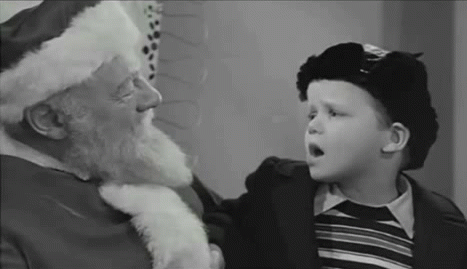

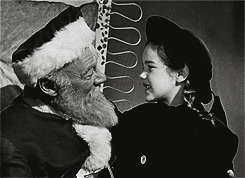
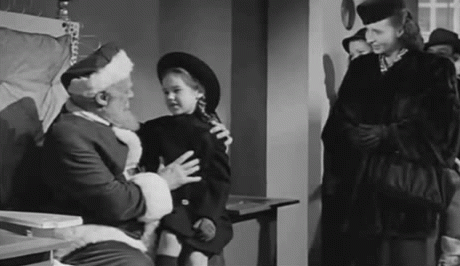

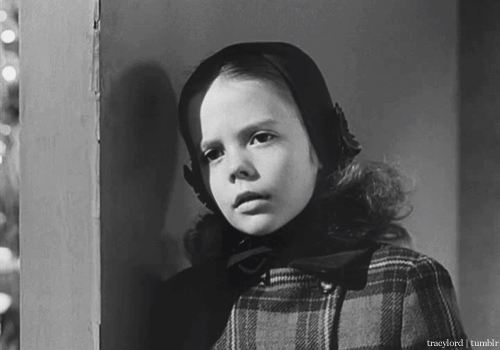

































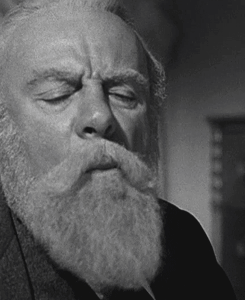













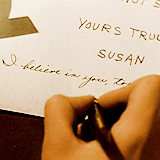







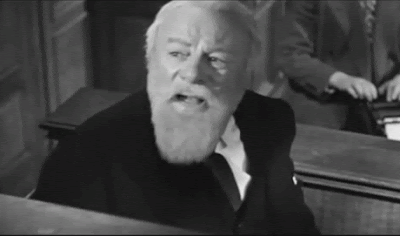























.jpg)











.jpg)
.jpg)
.jpg)

.jpg)
.jpg)







.jpg)







.jpg)





.png)




.jpg)






.jpg)













.jpg)


.jpg)










.jpg)



.jpg)

.gif)

.jpg)



.jpg)

















.jpg)
.jpg)

.jpg)
.jpeg)